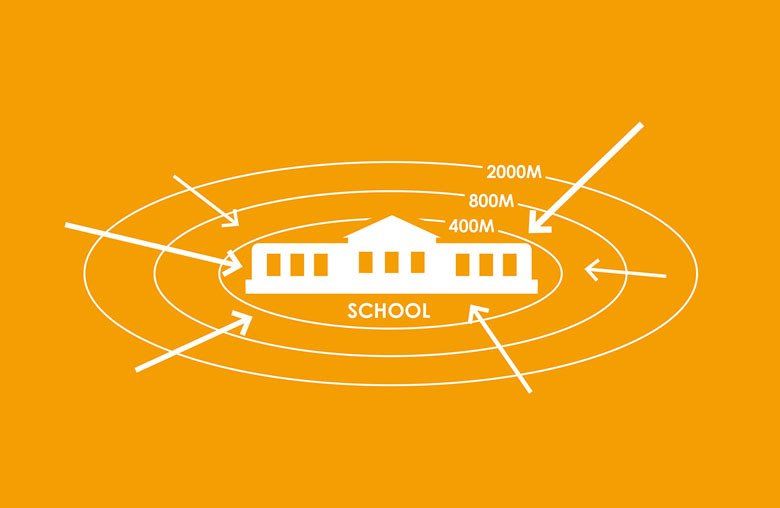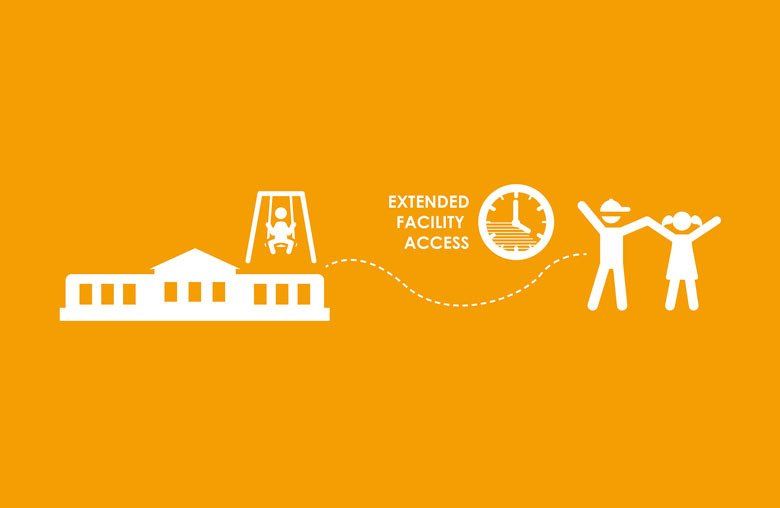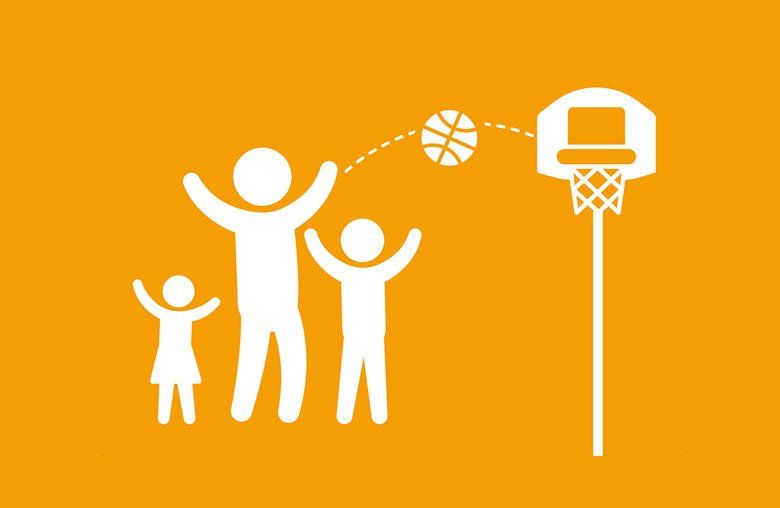When community facilities, such as schools and sport and recreation facilities, are all located near to homes and each other - and ideally within cycling or walking distance - it enhances opportunities for physical activity, wellbeing, sports participation, community interaction and social cohesion. The co-location of sporting facilities and schools within a neighbourhood or housing estate, for instance, will encourage children to walk or cycle to school and for all ages to use local recreation facilities, including those at schools, out of school hours. This section highlights the value of making community facilities flexible, shared, mixed-use and available at many times.
Authors: Dr Karen Villanueva, Dr Hayley Christian, Julianna Rozek, Dr Lucy Gunn, Dr Melanie Davern, Professor Billie Giles-Corti
Detailed further guidance on this design feature is available on our
Publications and Policies page.
Schools are often centrally located within a community. The facilities and spaces they contain can provide opportunities for residence to be physically active
What do we mean by ‘community facilities’?
Community facilities are public places where members of a community gather for recreational, educational, artistic, social or cultural activities. The activities can be organised, such as amateur sports leagues, or casual, such as children visiting a playground.
Examples of community facilities include:
- Schools
- Neighbourhood centres
- Libraries
- Sports centres
- Parks
- Places of worship.
Children and adolescents with access to existing school recreational facilities outside of regular school hours are more likely to be active
The availability and proximity of recreation facilities has been associated with greater physical activity among adults, adolescents and children
Download the Community Facilities infographic
Community Facilities
Stay informed. Sign up to our newsletter.
I agree that I have read and I accept the Heart Foundation's Privacy Statement.
Thanks for subscribing to our newsletter.
Please try again later.
All Rights Reserved | National Heart Foundation of Australia



